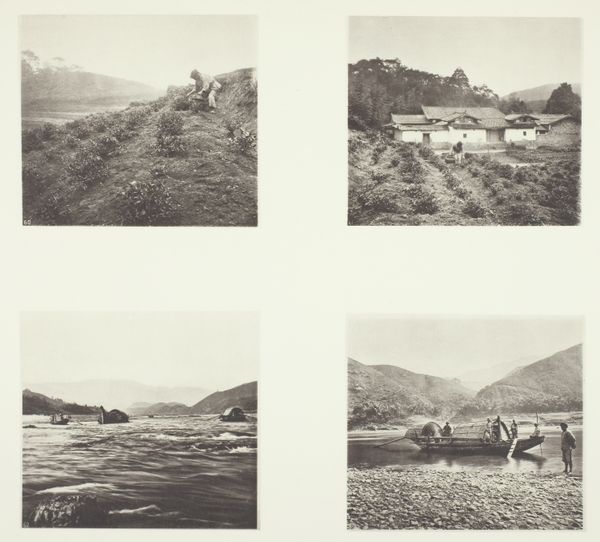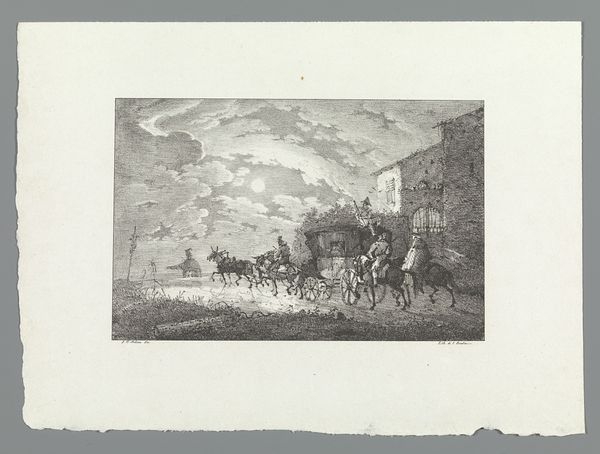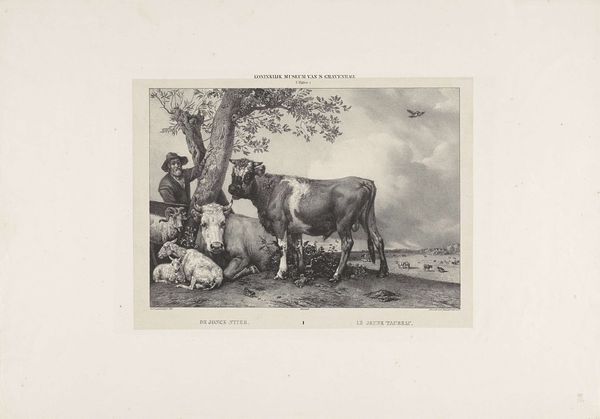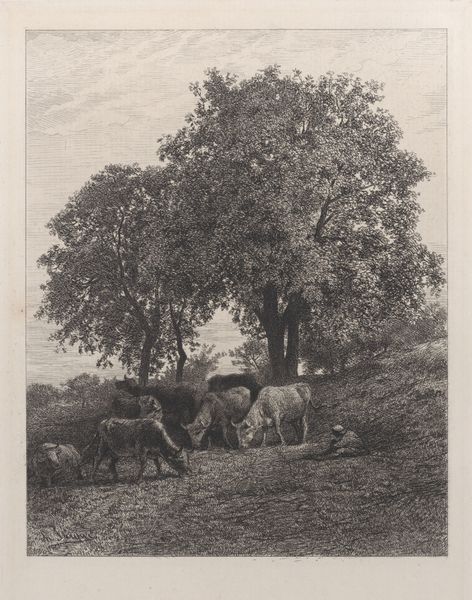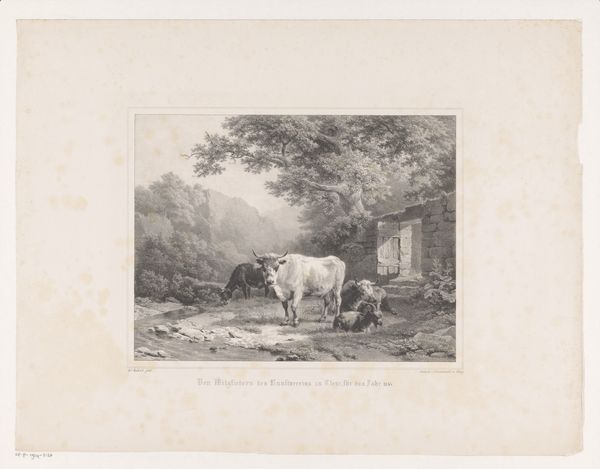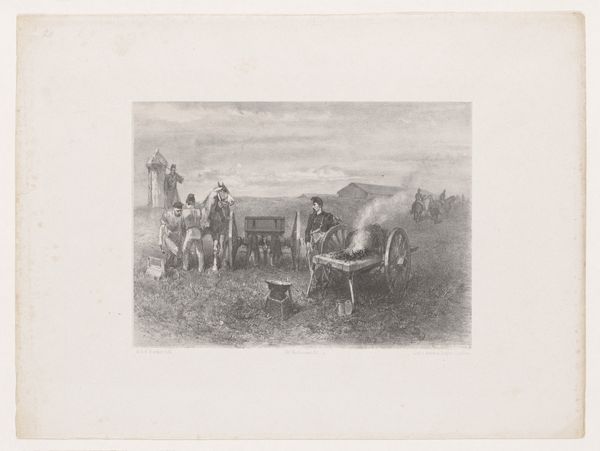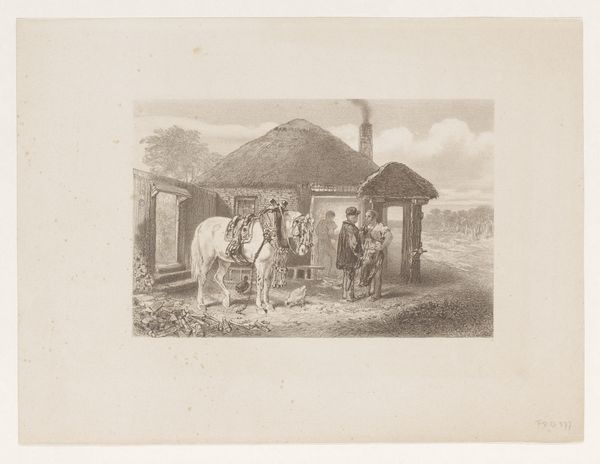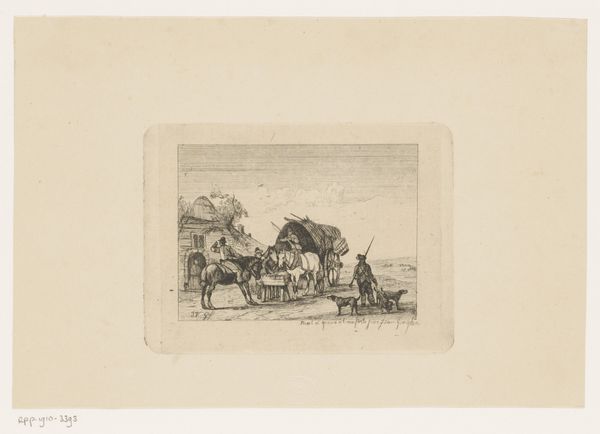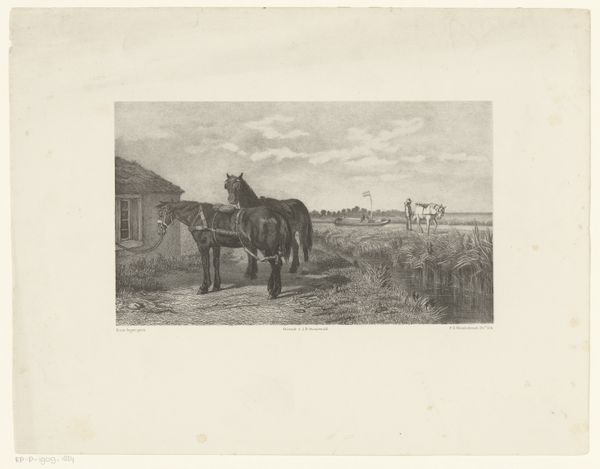
The Sedan; A Military Officer; The Plough; A North China Pony c. 1868
0:00
0:00
photography
#
portrait
#
16_19th-century
#
asian-art
#
landscape
#
photography
#
genre-painting
Dimensions: 9.2 × 12.7 cm (upper left image); 9.5 × 12.6 cm (upper right image); 11.6 × 12.7 cm (lower left image); 11.6 × 12.7 cm (lower right image); 34.8 × 47.2 cm (album page)
Copyright: Public Domain
Curator: I’m immediately struck by the quiet formality of these scenes. There’s a stillness that permeates them, a composed sense of observation. Editor: That’s a perceptive way to begin. This photographic print, created around 1868 by John Thomson, is titled "The Sedan; A Military Officer; The Plough; A North China Pony." It resides here at the Art Institute of Chicago. Each scene seems to capture a slice of 19th-century Chinese life. Curator: Indeed. And look how carefully Thomson composes each individual shot – like visual notes in a travelogue. The sedan chair, for instance, held aloft by its carriers; that almost theatrical presentation. What stories do these frozen moments hold? What psychological impressions were Thomson intending to communicate? Editor: Well, consider the historical context. Thomson was documenting a world undergoing immense transformation through imperialism. Photography at the time often functioned as a tool of both scientific record and colonial power. What seems like simple observations are inherently shaped by his presence, and by the anticipated Western audience. Curator: Yes, and in the image of the military officer – isn’t there a tension there? He’s presented with dignity, yes, but within a framework set by the photographer. I think it is in part what makes me uneasy, or what triggers a particular thought of mine. Is it possible to fully grasp another culture’s own understanding of their time? Editor: That tension, that potential for misrepresentation or simplification, is key. The seeming objectivity of the camera belies a complex interplay of perspectives and power dynamics. Curator: What is consistent throughout the photographs is his careful capturing of everyday elements: The labor shown by a horse-pulled plow in a rural setting. There is in the horse I recognize strength and endurance—symbols easily translated. Editor: Thomson's attention to work and conveyance is interesting, providing as it does a lens on mobility within the social structures of the time. I wonder what the viewer in the 1860s extracted from them and how they saw themselves against these unfamiliar faces and social dynamics. Curator: I am left questioning how imagery reinforces existing understanding while potentially subverting established tropes. What aspects of these four vignettes continue to provoke conversations around image objectivity and power relations? Editor: Absolutely, the continued relevance of his work invites introspection about visual representation across changing epochs and social dynamics.
Comments
No comments
Be the first to comment and join the conversation on the ultimate creative platform.
